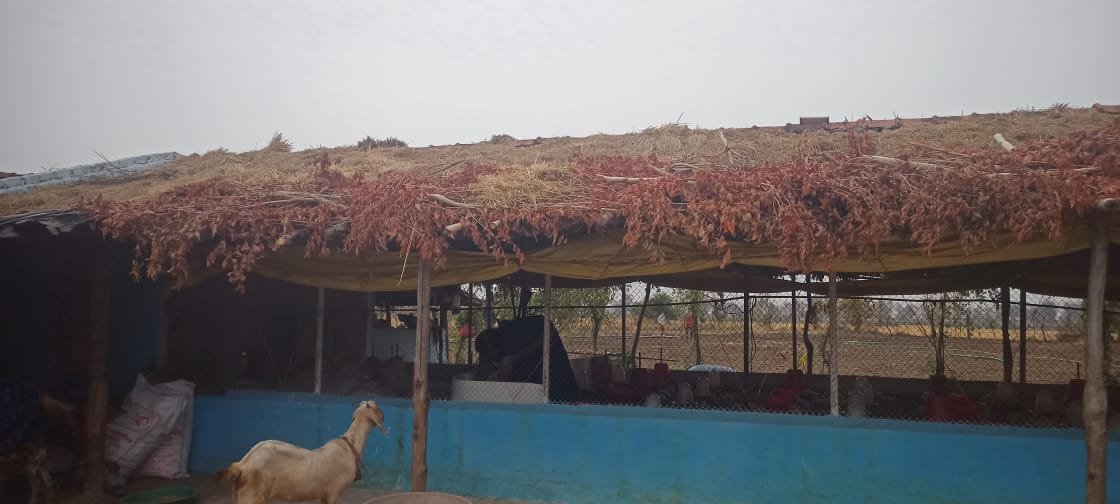

Together, dairy and animal husbandry make up 4.5% of India’s total Gross Domestic Product. But extreme heat is challenging productivity in these sectors.
Sprinkling water on cages, ensuring the animals have enough drinking water and soaking gunny bags and laying them on roofs or the bodies of animals are popular ways of reducing heat stress in animals.
Improving shed design, and incorporating decentralised renewable energy are some of the innovative techniques farmers are espousing to reduce heat stress further. Funding these interventions, however, remains a challenge.
On a hot summer day in 2020, Savitri Bhanse went to tend to her chickens in her small backyard farm. But her ordinary routine of checking and feeding her chickens was upended by a crisis that spiralled out of control. “Some 50 to 70 chicks died in one day, just like that. They couldn’t survive because of the heat,” she told Mongabay India.
It was her second year rearing chickens with the Kesla Poultry Society, a cooperative of tribal women poultry farmers operating in Narmadapuram district (formerly Hoshangabad) in Madhya Pradesh, and the first time she’d experienced a loss of this kind in one fell swoop.
Extreme heat can be deadly for poultry and livestock. Poultry makes up 50% of India’s total meat production, while dairy contributes 24% to the country’s agriculture sector. Together, dairy and animal husbandry make up 4.5% of India’s total Gross Domestic Product (GDP). But extreme heat is challenging productivity in these sectors, which are set to grow as India’s population rises.
Commercial farms with more capital are better equipped to mitigate the impacts of heat stress, with some providing industrial-scale air ventilation systems in their sheds. Smaller and marginal farmers like Bhanse, are more at risk of experiencing losses in productivity or mortality on account of high temperatures. “Among the total agriculture households in India, 89.4% or 83.2 million are from small and marginal agriculture households. Small and marginalised farmers in India, post the Green Revolution, have seen degradation of soil, declining yield and furthering climate stressors without reaping the benefits,” said Nirmita Chandrashekar, senior program manager at SELCO Foundation, a social energy enterprise delivering sustainable energy solutions for the poor.
Small interventions such as changing roofing material or shed design can be life-saving for livestock exposed to heat in the summer months. Savitri Bhanse, who owns 500 chickens, credits the installation of a solar-powered cooler in her farm for preventing losses like the one she faced in 2020.
On the boil
The optimum ambient temperature for chickens is between 15 and 25 degrees Celsius and heat stress can set in when ambient temperatures rise to 30 degrees or higher. This causes their already high internal temperature of 41 to 42 degrees to shoot up. In the absence of sweat glands, chickens have limited avenues to release the heat building up in their bodies. If internal temperatures cross 46 degrees, heat stress in chickens can be fatal.
Source – india.mongabay.com

